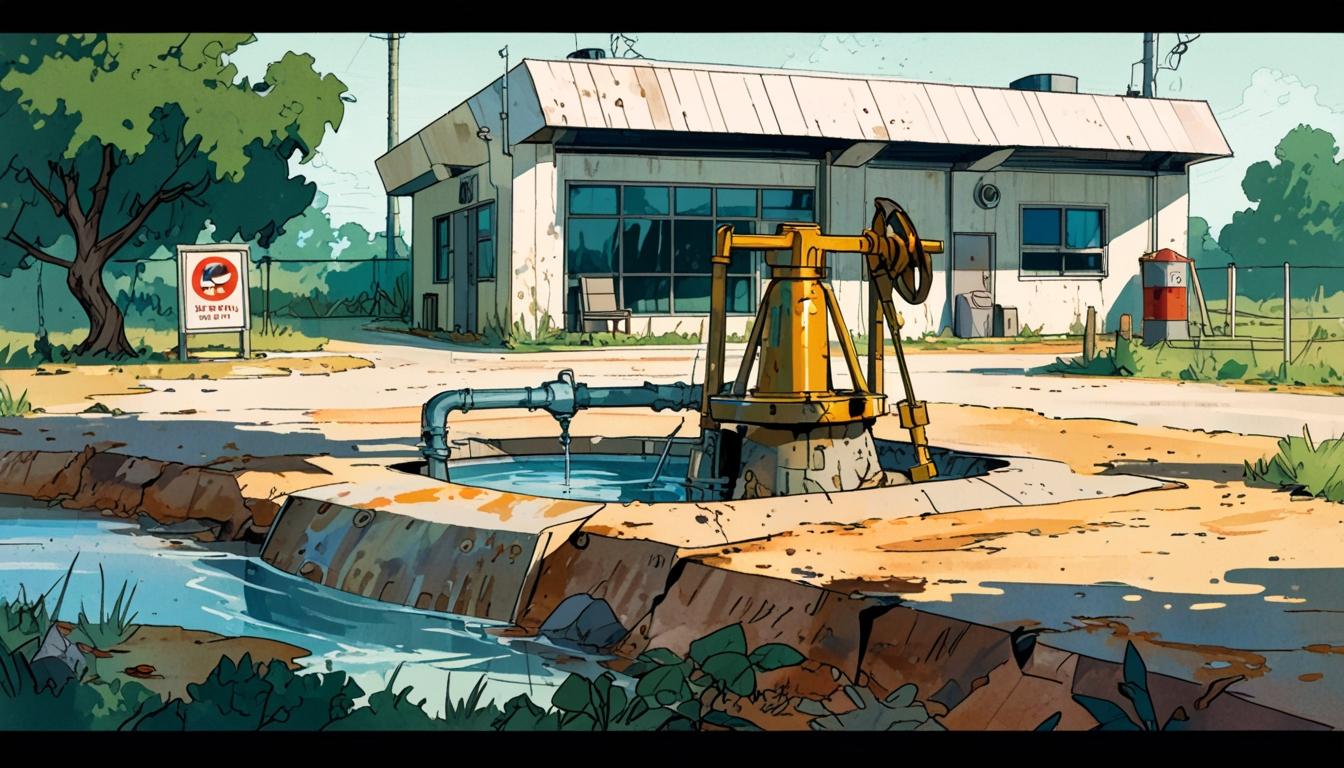Authorities in Ohio are set to initiate comprehensive groundwater testing in the village of Luckey, near a former Cold War-era weapons plant, following a newspaper investigation that revealed alarmingly high levels of radioactivity in samples collected from multiple public sites.
The report, published by The Blade in Toledo on Friday, recorded significantly elevated radioactivity in water samples taken from various locations, including a drinking fountain at Eastwood Middle School, where levels were found to be 10 times higher than normal. At the Luckey Library, these levels were 45 times above the norm, and near athletic fields, a water pump showed radioactivity 1,731 times beyond typical levels.
The contaminated site, a 44-acre industrial area located approximately 22 miles south of Toledo, was historically instrumental in the United States' nuclear weapons programme. Originally farmland in the 1940s, it was transformed into a defence plant that produced magnesium metal for the Manhattan Project. By the 1950s, the plant had become the government’s sole source of beryllium metal, used in nuclear bombs, Cold War missiles, and Space Race technologies, including the heat shield for Project Mercury.
The U.S. Army Corps of Engineers, responsible for overseeing the cleanup of the site since 2018, has been removing contaminated soil from the area. Until now, officials have maintained that residential zones were not impacted by the contamination, emphasising findings from thousands of soil samples collected during the remediation process.
Lieutenant Colonel Robert Burnham, commander of the Army Corps’ Buffalo District, stated, “We’ve got to get to the bottom of this,” signalling a commitment to investigating the troubling findings revealed by the newspaper’s independent testing.
Out of 39 well water samples collected by The Blade across homes, businesses, and public facilities in Luckey, 19 showed radioactivity levels at least 10 times greater than what federal guidelines consider normal for the region. The tests, conducted by an accredited private laboratory, primarily detected bismuth-214, a decay product of radon-222 gas, which is highly radioactive. Experts note that elevated bismuth-214 levels strongly indicate the presence of high radon concentrations, a significant public health concern given radon exposure is the leading cause of lung cancer among nonsmokers.
Additionally, low levels of cobalt-60, a man-made radioactive isotope, were detected in two wells, a finding experts described as extremely rare.
Taehyun Roh, a scientist specialising in environmental exposures at Texas A&M University, recommended broader environmental assessments. “Since this area likely has high radon levels, testing for radon in both air and water is advisable,” he said in an email. He further suggested that “a safe drinking water advisory should be issued, recommending the use of bottled water until further assessments and mitigation measures are in place.”
In response to the investigation, Ohio’s Environmental Protection Agency and Department of Health have announced plans to lead new testing efforts in the village. Ohio EPA spokesperson Katie Boyer acknowledged that while contaminant levels in the public water supply remain “within acceptable drinking water standards,” any issues identified through forthcoming state testing will be addressed.
Local residents voiced concerns about the long-term legacy of contamination. Karina Hahn-Claydon, a 50-year-old teacher living less than a mile from the former plant, reflected on the ongoing impact: “Things that happened generations ago are still affecting us. And that’s because the government didn’t take care of it.”
Unlike public water systems, private drinking wells in the area are not subject to regulatory oversight, leaving individual property owners responsible for water testing. The Blade’s investigation conducted well water tests over a nine-month period from April 2024 through January 2025.
The presence of radioactivity in the groundwater poses serious health risks, as exposure is linked to increased incidences of cancers, including those affecting blood and the thyroid. The unfolding situation has prompted renewed scrutiny of environmental safeguards around former industrial and defence sites, especially where communities rely on private wells for their drinking water.
Source: Noah Wire Services
